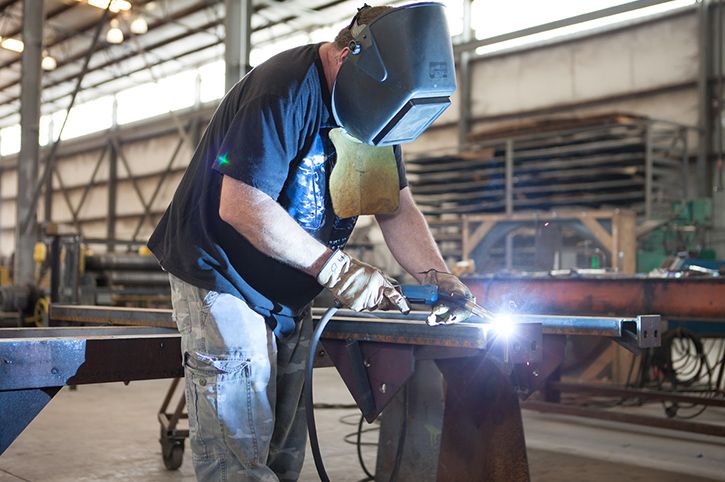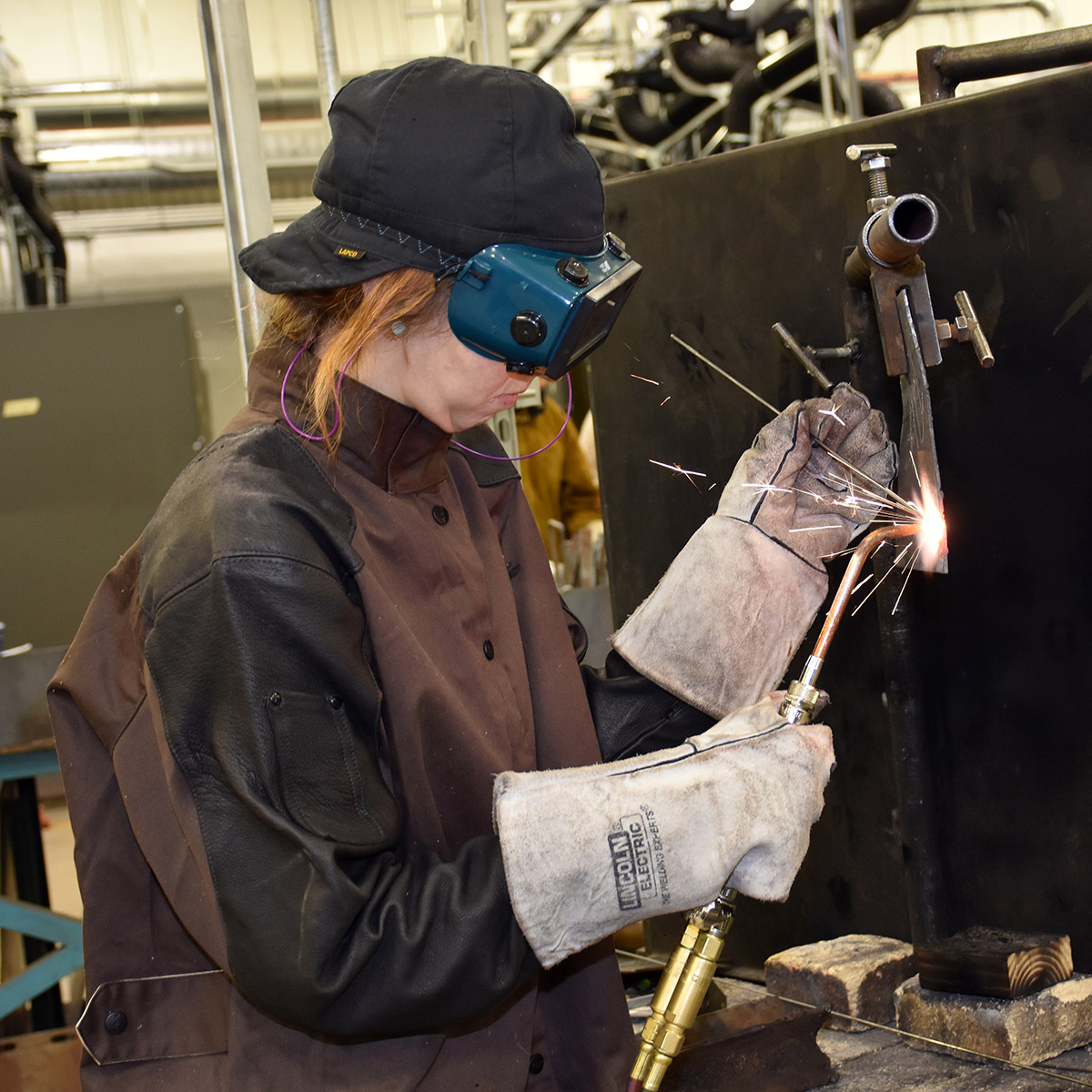What you should do when encountering porosity in Montana Mobile Welding and Repair Welding
Everything about Welding: Key Insights Into Techniques and Best Practices for Success
Welding encompasses a range of techniques, each suited for certain materials and applications. Recognizing these approaches, such as GMAW, SMAW, and TIG, is vital for achieving suitable results. The ideal devices and safety and security techniques can not be forgotten. As preparation and repairing play essential duties in the welding process, understanding these components can greatly boost the high quality of the final item. What are the essential elements that ensure a successful weld?
Recognizing Various Welding Strategies
Welding strategies incorporate a range of approaches, each suited to certain applications and materials. Amongst the most usual methods are Gas Steel Arc Welding (GMAW), Shielded Metal Arc Welding (SMAW), and Tungsten Inert Gas Welding (TIG) GMAW, likewise referred to as MIG welding, is prominent for its speed and versatility, making it ideal for thin products. SMAW, or stick welding, is preferred for its simplicity and efficiency in exterior atmospheres, specifically with thicker metals. TIG welding supplies precision and control, making it ideal for elaborate work and non-ferrous steels (Welding). Each technique has its special benefits and considerations, permitting welders to choose the very best approach based upon the task's requirements, material type, and wanted end results. Understanding these techniques is important for effective welding
Vital Welding Equipment and Tools
While various welding methods require specific skills, the appropriate equipment and tools are equally crucial for achieving quality results. Necessary welding equipment consists of welding makers, which vary depending upon the technique-- such as MIG, TIG, or stick welding. Safety gear, consisting of helmets, handwear covers, and aprons, assurances safety and convenience throughout the process. In enhancement, clamps and fixtures aid protect materials in place, making certain accuracy in welds. Consumables like welding poles, wire, and protecting gas are likewise important components that affect the top quality of the weld. Devices such as mills and cutters help with surface area prep work and post-weld completing, contributing to a professional result. Buying high-grade equipment eventually enhances the effectiveness and effectiveness of welding projects.
Safety And Security Practices in Welding
Appropriate safety and security methods are essential in the welding market to shield employees from possible risks. Welders must use suitable personal safety equipment (PPE), consisting of helmets with proper shading, handwear covers, and flame-resistant clothes. Appropriate ventilation is essential to reduce exposure to unsafe fumes and gases created throughout the welding process. Additionally, employees should be learnt the correct handling of welding devices to protect against mishaps. Fire precaution, such as keeping flammable materials far from the welding location and having fire extinguishers readily available, are needed. Normal assessments of equipment and workspaces can assist identify potential hazards prior to they result in crashes. By adhering to these safety and security techniques, welders can develop a much safer working setting and lessen threats related to their trade.
Readying Materials for Welding
Preparing products for welding is an important step that greatly affects the top quality and honesty of the end product (Fabrication). Appropriate prep work includes cleansing the surface areas to remove pollutants such as rust, dust, and oil, which can endanger the weld. Strategies such as grinding, fining sand, or making use of solvents are typically employed to achieve a clean surface area. Furthermore, making sure that the products fit together snugly is necessary; gaps can lead to weak welds. It's also crucial to take into consideration the alignment and positioning of the elements, as this will certainly influence the convenience of welding and the last result. Lastly, selecting the ideal filler material and making sure compatibility with the base steels is vital for achieving solid, durable welds
Tips for Achieving High-Quality Welds
Achieving high-grade welds requires useful content interest to information and adherence to finest techniques throughout the welding process. Correct joint prep work is essential, ensuring surface areas are tidy and totally free from pollutants. Choosing the appropriate filler product and welding method based upon the base metals is critical for excellent bonding. Preserving regular travel speed and angle while welding can advertise and stop defects uniformity. Furthermore, regulating warm input is important; too much warmth can cause warping and damaged joints. Frequently examining the welds during the process permits immediate adjustments if required. Finally, utilizing appropriate post-weld therapies, such as cleaning and stress alleviation, can boost the sturdiness and integrity of the weld, inevitably ensuring an effective result.
Repairing Common Welding Issues
Welding usually presents challenges that can impact the high quality and stability of the end product. Common concerns such as porosity, irregular weld grains, and overheating can occur, each requiring details repairing methods. Comprehending these problems is important for welders to enhance their abilities and accomplish excellent outcomes.
Porosity Issues Discussed
Although porosity can usually be ignored, it continues to be an essential issue in welding that can compromise the stability of an ended up product. Porosity describes the presence of little gas pockets within the weld grain, which can weaken the joint and lead to premature failure. This issue usually emerges from pollutants, dampness, or inappropriate shielding gas protection throughout the welding procedure. To reduce porosity, welders must validate that the base materials are completely dry and tidy, utilize ideal shielding gases, and maintain consistent welding specifications. Consistently inspecting the equipment and environment can additionally assist identify prospective problems before they materialize in the weld. Dealing with porosity properly is essential for achieving solid, sturdy welds that meet high quality requirements.

Inconsistent Weld Beans
Irregular weld beads can considerably influence the high quality and toughness of a completed product. Various variables add to this problem, consisting of improper travel rate, incorrect amperage setups, and inconsistent electrode angles. When the welder moves also promptly, a grain might appear narrow and do not have penetration, while relocating as well gradually can cause excessive accumulation. Furthermore, utilizing the incorrect amperage can lead to either undercutting or extreme spatter, both of which concession weld stability. The welder's strategy, such as irregular lantern activity, can also result in unequal bead look. To minimize these issues, welders ought to focus on keeping steady, controlled motions and making sure correct tools setups to achieve harmony in their welds. Uniformity is crucial to achieving reputable and strong welds.
Overheating and Bending Issues
Extreme heat during the welding process can cause considerable getting too hot and contorting concerns, affecting the architectural stability of the workpiece. These problems usually manifest as distortion, which can jeopardize placement and fit-up, making more setting up testing. Elements adding to overheating include the choice of welding parameters, such as voltage and take a trip rate, as well as the kind of material being welded. To minimize these problems, welders must keep regular traveling rate and appropriate heat input while checking the work surface temperature. click for more Additionally, pre-heating or post-weld warm treatment can assist ease stress and anxieties triggered by quick air conditioning - Montana Mobile Welding and Repair Belgrade. Regular evaluation and adherence to best thermal arc welder practices are necessary in avoiding getting too hot and guaranteeing the durability and integrity of welded frameworks
Frequently Asked Questions
What Are the Job Opportunities in the Welding Market?
The welding industry offers varied occupation possibilities, consisting of positions as welders, engineers, educators, and assessors. Experts can operate in manufacturing, building, aerospace, and automotive fields, taking advantage of strong need and affordable incomes in various roles.
How Can I Boost My Welding Rate Without Sacrificing Top Quality?
To enhance welding speed without sacrificing high quality, one must exercise reliable methods, keep devices, maximize setups, and enhance hand-eye control. Normal training and looking for comments can likewise considerably add to attaining faster, high-grade welds.
What Accreditations Are Available for Welders?
Various certifications exist for welders, consisting of those from the American Welding Culture (AWS), the National Center for Building Education and Research (NCCER), and various industry-specific organizations. These credentials enhance employability and demonstrate skill proficiency.
Just How Does Welding Impact the Characteristics of Metals?
Welding affects the homes of steels by changing their microstructure, which can result in modifications in hardness, stamina, and ductility. Heat input and cooling prices throughout the procedure greatly affect these material characteristics.
Can I Weld Dissimilar Metals With Each Other?
